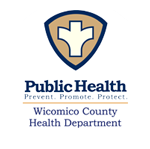The Value of Prevention
Author: Taylor Hill, Salisbury University English Intern
Several factors contribute to the health care crisis in the United States. One of the most important is the nation’s health care system’s focus on treating people after they have become sick or harmed instead of keeping well and safe in the first place. It is time to change by starting to prevent illness and harm before it occurs by making healthier choices. Investing in prevention gives the opportunity for Americans to lead healthier lives, reduce health costs, and ensuring the nation’s workforce is strong and healthy.
America spends more than 2 trillion dollars annually on health care, which is more than any other nation in the world. However, tens of millions of Americans suffer every day from preventable illnesses and chronic diseases such as type 2 diabetes, heart disease, stroke, and cancer. Research shows that 7 out of 10 deaths each year are from chronic diseases, and almost 1 out of every 2 adults has at least one chronic illness. Despite the high rates of preventable death in the United States, investment in prevention has been very low, accounting for only 4% of all health care expenditures. Preventing diseases and addressing risk factors, such as tobacco use, poor diet, and physical inactivity, will improve the health of Americans and reduce health care costs over the long term.
A focus on prevention will not only improve the health of Americans, but also help to reduce health care costs and improve quality of care. Healthy choices are neither easy nor affordable in many communities today due to different factors, such as housing, education, transportation, the availability of quality affordable food, the costs of health insurance, and conditions in the workplace and the environment. These factors threaten to bankrupt American businesses and weaken the U.S. economy. The trend of companies selling jobs to other countries where health care costs are lower is likely to continue unless the health of the nation improves and costs are contained. Health care costs can be reduced if Americans improve in health and safety. Right now, 75 percent of all health care costs are spent on the treatment of chronic diseases, many of which could have been prevented. In Maryland alone, Trust for People’s Health (TFAH)estimated that net savings of intervention would be around 332,200,000 dollars in five years.
By preventing diseases and illnesses, insurance costs will go down, more jobs in America are created, the workforce becomes productive, communities are encouraged to be healthy and responsible, and citizens will have the opportunity to lead healthier, longer lives. These efforts will improve the economy and quality of life and care. A beneficial way to reduce health risk influences are community-based prevention programs because of how well they work and because there is no charge to the public. An increasing body of evidence demonstrates that well-designed interventions can change behavior and reduce both the incidence and severity of disease. For more information about prevention, visit http://healthyamericans.org/ and http://www.cdc.gov/ or contact us here at the health department.

